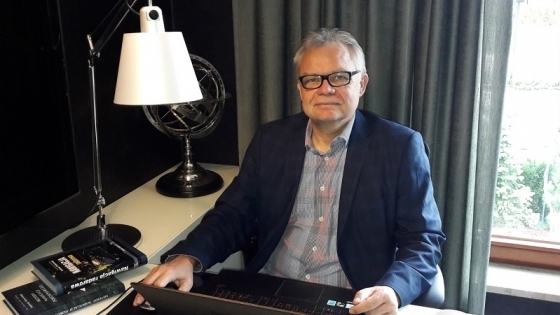A company from Szczecin to build hydrodrone
The National Centre for Research and Development has granted more than PLN 2 million to Marine Technology for the first Polish hydrodrone (an unmanned device to take measurements underwater).
 Professor Andrzej Stateczny
/fot.: Mat. Technopark Pomerania /
Professor Andrzej Stateczny
/fot.: Mat. Technopark Pomerania /
The hydrodrone - an unmanned catamaran, 4 meters long and 2 meters wide - will be able to perform hydrographic measurements, inter alia in ports, roadsteads, rivers, lakes, bays and gulfs.
“It will be equipped with modern multibeam echosounder to measure the underwater floor, and a sonar to develop nautical charts using sound waves. Thus obtained data will allow not only to create an underwater floor model but also to see the objects located there. The main purpose of designing a hydrodrone is to draw maps that will make ship navigation easier, but in the future, a hydrodrone may also be used, among others, to verify the status of hydrotechnical structures such as weirs, sluices, or lock-gates and to test water quality” - reads the press release of Technopark Pomerania’s media office (Marine Technology has its headquarters in Technopark) - “The major advantage of a hydrodrone is its compact size which expedites transportation, launching, and enables it to work in sites that are difficult to reach or are virtually unavailable for manned water-crafts. This use is especially important for in-land waterways which, in line with the European Agreement on Main Inland Waterways of International Importance prepared by United Nations Economic Commission for Europe, is to become an alternative to motorways and roads in EU states”.
“The measurements made by people, kilometre by kilometre, are arduous, very time-consuming and troublesome. Our remotely controlled and autonomic hydrodrone will be able to automate that work. We will control the drone from the land or program it to measure the planned route by itself,” says prof. Andrzej Stateczny, the founder and CEO of Marine Technology.
Professor Andrzej Stateczny also explains: “The objective set by the EU policy is to move approx. 30% of cargo to waterways by 2030 – this is how transportation is now organized in the Netherlands and certain other countries. Unfortunately, the majority of Polish rivers do not meet international navigability standards. For that reason during the next few years large modernizing projects are bound to be initiated, and they first of all require making appropriate measurements.
The total cost of creating the first hydrodrone is estimated at over PLN 2.5 million.
“The company obtained more than PLN 2 million from the National Centre for Research and Development, as part of the EU Smart Growth Operational Programme. Our own contribution will reach PLN 0.5 million,” says Prof. Andrzej Stateczny.
The hydrodrone will be ready in two years. The project was initiated in November 2016.
“Currently we are working on the floating section,” says Professor Andrzej Stateczny. “We should be able to run water tests during the next summer holidays.
Marine Technology is a spin out with a research profile, and its main business focus is conducting research and development in the field of engineering.
Established in Gdynia in 1998, it has been operating from its headquarters in Szczecin at ul. Klonowica for years now. It also has an office in Technopark Pomerania as well as a branch in Gdynia.
The company was founded by Professor Andrzej Stateczny, who worked in the Maritime University in Szczecin over the years: 1997-2017. Beginning from this year, Professor Stateczny is an employee of the Szczecin University of Technology. He is the main shareholder fo the company.
Professor Andrzej Stateczny points out that his company inter alia has taken part in the works (before and after deepening sounding) linked with the construction of the gas pipeline in Świnoujście.
In 2013 the company prepared a set of first Polish inland electronic navigation maps that covered the entire area in which the Lower Odra River Information System would be implemented.
ata
Wszystkich rekordów:








